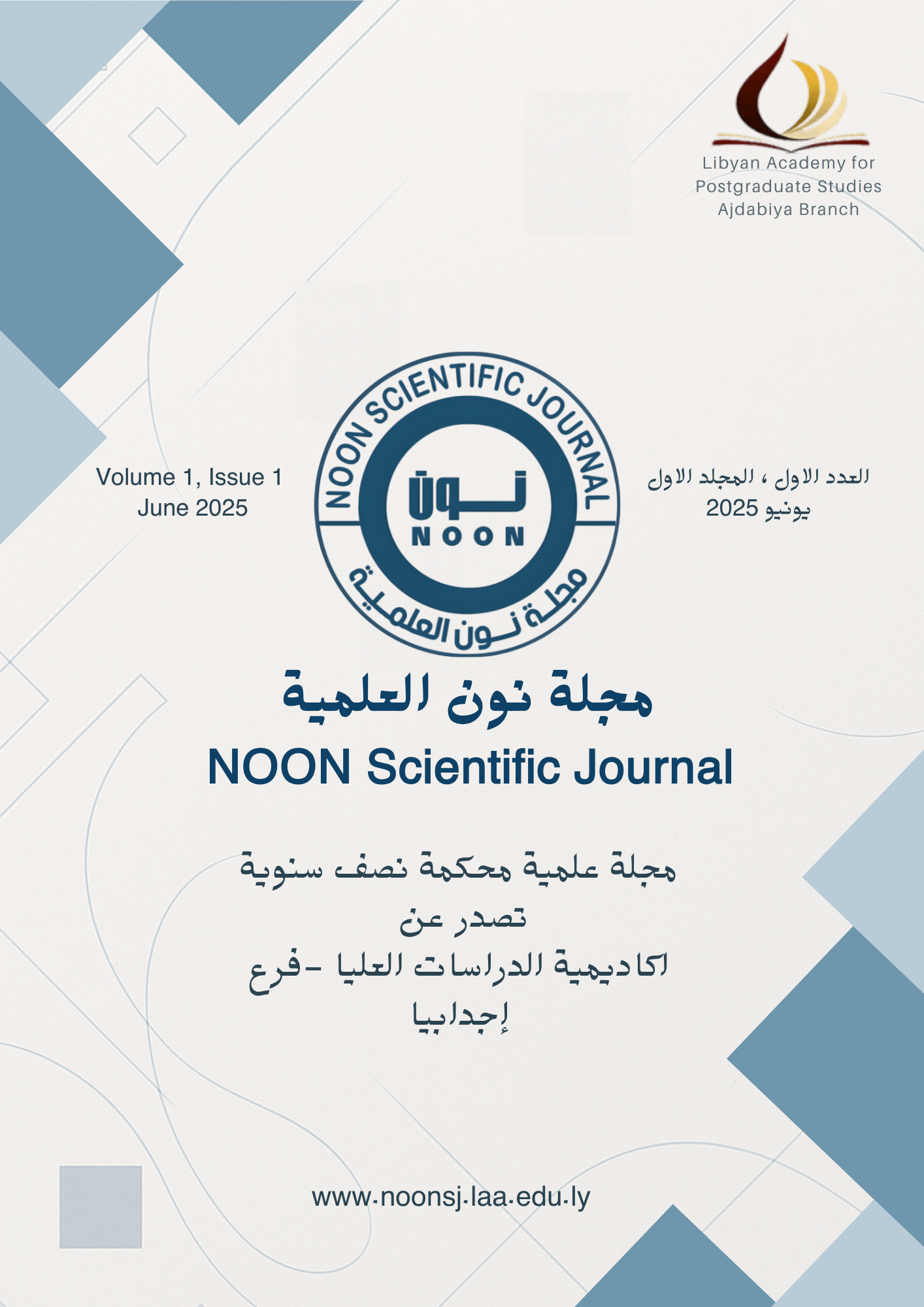Home \ Archives\vol 1, No 1, 2025\ Articles
ACCURACY OF ULTRASOUND IN THE DETECTION OF APPENDICITIS
- ABDALBASET ALDEEP, SEHAM ALBADRI, FATMA SOOF & ABTESAM ELJEBALI
- Faculty of Medicine, University of Benghazi, Benghazi city, Libya
Volume (1), Issue (1) , June 2025

Published: 06/30/2025
Keywords: Ultrasound scan, appendicitis, accuracy, Ajalla hospital, Benghazi, Libya
Abstract: Ultrasound (US) is the preferred first-line imaging modality for diagnosing in acute appendicitis. The published sensitivity and specificity of ultrasonography are higher than the results observed by clinicians in everyday practice. The aim of this study was to elucidate the real-world value of ultrasonography in the diagnosis of appendicitis and its impact on negative appendectomy rates. This prospective study took place in the Department of Radiology at Ajalla Hospital in Benghazi, Libya, over 8 months. The study included 350 cases of clinically suspected appendicitis diagnosed using ultrasonography. All patients were evaluated clinically and underwent imaging, with findings confirmed by perioperative and histopathological results. A total of 350 cases of appendicular pathologies were studied, with a mean patient age of 31.50 (±13.40) years, ranging from 7 to 40 years. Forty-one percent of patients were aged 20-30 years, with 53% females and 47% males. The most common finding was a classical inflamed appendix (34%). The second most common finding was a distended, uncompressed cecum (28%), with other findings including focal dilated
terminal ileum, free fluid in the ileocecal region with focal dilation, and free fluid in the ileocecal region, accounting for 17%, 11%, and 10% of cases, respectively. All operated cases were confirmed to have appendicitis on histopathological examination. It can be concluded that ultrasound assessment of the appendix is very accurate in diagnosis, with additional advantages over other radiological imaging techniques such as wide availability, simplicity, low cost, noninvasiveness, and lack of the need for ionizing contrast material. Furthermore, ultrasound can help exclude other causes of right
iliac fossa pain.
References
Anandalwar, S.P., Callahan, M.J., Bachur, R.G., Feng, C., Sidhwa, F., Karki, M., Taylor, G.A., & Rangel, S.J. (2015). Use of white blood cell count and polymorphonuclear leukocyte differential to
improve the predictive value of ultrasound for suspected appendicitis in children, Journal of the American College of Surgeons, 220(6): 1010–1017, 25708747,
https://doi.org/10.1016/j.jamcollsurg.2015.01.039, 2-s2.0-84929837779, 25708747.
Chan, I., Bicknell, S.G., & Graham, M. (2005). Utility and diagnostic accuracy of sonography in detecting appendicitis in a community hospital. American Journal of Roentgenology, 184(6): 1809–
1812. https://doi.org/10.2214/ajr.184.6.01841809.
Chesbrough, R.M., Burkhard, T.K., Balsara, Z.N., Goff, W.B., & Davis, D.J. (1993). Self-localization in US of appendicitis: an addition to graded compression. Radiology, 187(2):349-351.
doi:10.1148/radiology.187.2.8475271 Flum, D.R., & Koepsell, T. (2002). The clinical and economic correlates of misdiagnosed appendicitis. Nationwide analysis. Archives of Surgery, 137(7): 799-804.
Himeno, S., Yasuda, S., Oida, Y., Mukoyama, S., Nishi, T., Mukai, M., Nakasaki, H., & Makuuchi,
H. (2003). Ultrasonography for the diagnosis of acute appendicitis. The Tokai Journal of Experimental & Clinical Medicine, 28(1): 39–44.
Keskek, M., Tez, M., Yoldas, O., Acar, A., Akgul, O., Gocmen, E., & Koc, M. (2008). Receiver
operating characteristic analysis of leukocyte counts in operations for suspected appendicitis. The
American Journal of Emergency Medicine, 26(7): 769–772.
Kessler, N., Cyteval, C., Gallix, B., Lesnik, A., Blayac, P.M., Pujol, J., Bruel, J.M., & Taourel, P. (2004). Appendicitis: evaluation of sensitivity, specificity, and predictive values of US, Doppler US,
and laboratory findings. Radiology, 230(2): 472–478. https://doi.org/10.1148/radiol.2302021520.
Mostbeck, G., Adam, E.J., Nielsen, M.B., Claudon, M., Clevert, D., Nicolau, C., Nyhsen, C., & Owens, C.M. (2016). How to diagnose acute appendicitis: ultrasound first. Insights Imaging, 7(2):255-63. doi: 10.1007/s13244-016-0469-6.
Puylaert, J. (2020). 14. The Radiology Assistant : Appendicitis – US findings, 5/7/2020, retrieved from https://radiologyassistant.nl/abdomen/acute-abdomen/appendicitis-us-findings.
Puylaert, J.B. (1986). Acute appendicitis: US evaluation using graded compression. Radiology,158(2): 355-360.
Puylaert, J.B. (1986). Acute appendicitis: US evaluation using graded compression. Radiology,158(2):355–360. doi: 10.1148/radiology.158.2.2934762.
Ripollés, T., Martinez-Perez, M. J., Morote, V., & Solaz, J. (1998). Diseases that simulate acute appendicitis on ultrasound. The British Journal of Radiology, 71(841): 94–98.
https://doi.org/10.1259/bjr.71.841.9534708
Seal A. (1981). Appendicitis: a historical review. Canadian Journal of Surgery, 24(4): 427–433. Snell, R. (2008) Clinical Anatomy by Region. 8th Edition, 669.
Stephens, P.L., & Mazzucco, J.J. (1999). Comparison of ultrasound and the Alvarado score for the diagnosis of acute appendicitis. Connecticut Medicine, 63(3): 137–140.
